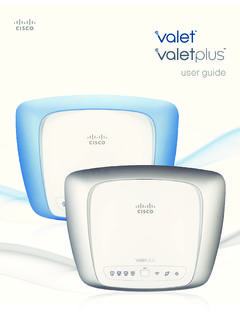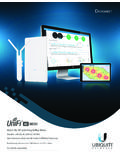Transcription of for Information Technology Departments - avdiusa.com
1 Deploying AirMediaTM for Information Technology DepartmentsConsiderations when Deploying AirMediaTMIntroduction AirMedia 1 User ExperienceOn Screen Display 2 Login Code 2PC Clients 2 guest ApplicationGuest Access User Experience 3 guest Application Executable 3 Installed ApplicationReading a List of Devices from a File
2 4 Room list connection experience 4 Configuration File 5 Device List File 5 File Association 6 Room list connection experience 6 Discovery 6 Manual 6
3 ConsiderationsDevice Naming 7 Device Administration 7 Firewall Rules 8 Mobile ApplicationsConnecting 9 Future Development 9 Network InfrastructureUse Case: PowerPoint Presentation 10 Use Case: Using Word 11 Use Case.
4 Windowed Video 12 Use Case: Full Screen Video 13 Device UpgradesSingle Device (Web Interface) 14 Multiple Devices 14 ControlCrestron Connected 14 Control System |
5 Information Technology Departments1 IntroductionAirMediaTM (AM-100) is a device which allows users to present their content to projectors and displays using the existing IT infrastructure, without the hassle of connecting wires. It is a small network device with a single 10/100 megabit Ethernet port. Windows and OS X users can share their desktop by running a small application (no installation required). iOS and AndroidTM users can also share Excel , Word, PowerPoint , PDF files, photos, and other content by using the free application available in the App Store and in Google of its reliance on Ethernet, AirMedia has been designed with the IT professional in mind and includes many features to ease deployment (Figure 1).
6 This document provides background on AirMedia s operation, configuration options, user facing options and management tools. OPTIONALCONTROLSYSTEMSERVICE5V KeyLANHDMILANLANHDMILANWIRELESSACCESSPOI NTHDMIF igure 1: Simple AirMedia DeploymentConsiderations when Deploying AirMediaTM2 User ExperienceOn Screen DisplayAirMedia uses an on screen display to convey the basic connection instructions for guest access to the user. This display is customizable to allow for custom login instructions and branding. It provides the hostname (and optionally the IP address) as well as a login code for that specific AirMedia device (Figure 2).
7 Login CodeA login code is provided to help prevent users from accidentally connecting to an unintended device. The user begins the connection process and is prompted to enter a code. The code is only four digits, so it is easy for the user enter while being difficult enough to guess to prevent unwanted are three modes of operations: 1. Disabled (no login code required)2. Random (generated after the last user disconnects)3. Fixed a. A fixed code can be set in two ways i. Via the web pages, in which case it static ii. Via a control system, in which case it can be updated programmaticallyPC ClientsCrestron provides two ways of connecting to the AirMedia device when using Windows and OS X : a guest application (downloadable from the device) and a deployable stand alone application.
8 The guest and installed applications are compatible with the operating systems listed System: Windows MacVersions Supported: 8, 7, Vista, XP | Information Technology Departments3 guest ApplicationThe guest application is a small application that runs in place with standard user permissions. The AirMedia device s IP address is encoded in the filename of the application. The user may save the application locally, which allows them to connect directly to the device in the future. guest Access User Experience1. User enters the rooms and sees the instruction on the display a. The screen in Figure 2 is displayed b.
9 In the upper left hand corner the address is displayed c. By default both the IP and hostname are shown2. The user enters the address or hostname into their browser and are presented the web site shown in Figure 33. The user chooses their operating system and presses download a. A small application is downloaded which the user runs b. If required, they are prompted for the login code4. Session starts and the user s desktop is shown on the displayGuest Application ExecutableAlternately, the guest application can be downloaded and saved for custom deployments, such as to web sites or other media.
10 The connection parameters for the guest application are embedded in the file name. The format is as follows <any_text>_.<ip_address>.exe Please note the underscore and dot that precede the IP address Example: Figure 2: AirMedia s OSD with default hostname and IP addressFigure 3: guest download when Deploying AirMediaTM4 Installed ApplicationA stand alone application is also available which can be deployed to users computers across the enterprise. The application allows a number of other connection methods to simplify connecting to the AirMedia device, detailed below. This application has no registry requirements and can be silently deployed as a group of files to a folder on the user s computer.




